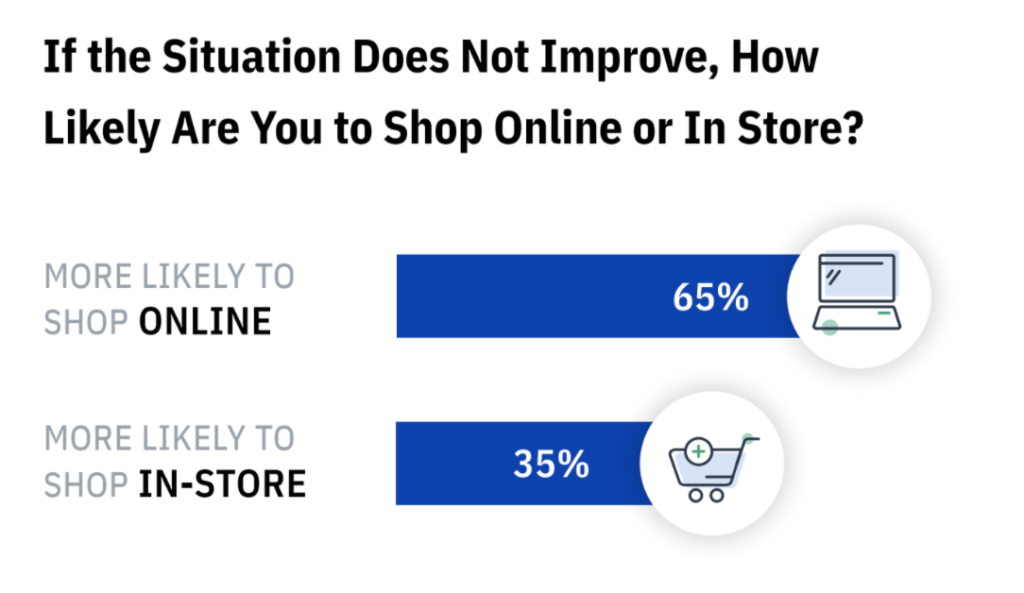We know that everyone is sick of talking about COVID, but the pandemic has had far-reaching effects on customer experience (CX) and employee experience (EX) that will persist long after the virus is finally contained. Staying on top of these effects is hugely important to continuous Experience Improvement (XI), which is why today we want to take you through one of the biggest elements we noticed in our recent experience trends report: customer aggression in the workplace.
Even if aggressive customers haven’t been a problem for your brand specifically, you’ve no doubt heard all the horror stories about employees and brands for whom they have been. The problem has become widespread enough that it’s changed many employees’ workplace expectations, and it’s in that context that we all need to consider a few questions. Why has this become so much more common, and how has that problem changed employee experience?
The Roots of Heightened Customer Aggression
Figuring out how best to respond to aggressive customers begins with finding out why this problem is ramping up to begin with. The answer probably won’t surprise you: the pandemic has been, to put it lightly, an extremely stressful time. Our research and that of many other organizations have found a direct correlation between that stress and the customer aggression we’re seeing in workplaces around the world.
As you might expect, this aggression has resulted in big changes when it comes to employee expectations. Whether it’s diffusing unruly airline passengers or a fight over Pokemon cards (not even kidding), many employees are experiencing enforcement fatigue from attempting to uphold COVID regulations in the face of hostile customers. As a result, many employees are expecting brands to make some pretty big changes in the post-pandemic era.
How Customers and Employees View This Problem
Another factor critical to addressing aggressive customers is understanding how experience stakeholders view the problem. That was another element to all of this that we closely researched, evaluating both customers and employees across a few different demographics. What these folks had to say might surprise you!
For example, when asked “what would you think if you witnessed a customer acting aggressively toward an employee at a place of business?” only 48% of customers said they’d perceive that behavior negatively. 6% of customers would develop a negative perception of the employee and the brand. Finally, when we looked at this data against a more generational backdrop, it became clear immediately that Generation Z shoppers would be the most likely to feel empathetic toward the employee.
To be clear, this question was asked under the assumption that the employee remained calm while the customer was being aggressive. But what happens when we change the scenario to both parties being aggressive toward each other? With that change thrown into the mix, 24% of customers had a negative perception of all customer behavior, Generation Z shoppers became less empathetic toward the employee, and negative sentiment toward the brand among all customers skyrocketed from 6% to a whopping 35%.
Clearly, mutually assured aggression isn’t the solution. What is?
Employee Commitment
The conventional wisdom for a lot of brands here is to closely support employees as incidents like these occur. That’s certainly important, but as The Great Resignation is demonstrating, strictly reactive support is insufficient for employee Experience Improvement (XI).
The answer, then, is for brands to dig much deeper in their employee support, going from reactive employee advocacy to something more fundamental and progressive: employee commitment. You can achieve employee commitment by working hard to drive trust, transparency, and communication, with the end goal being to help employees feel a human, emotional connection to their work. Taking this proactive tack with your employees won’t ‘just’ empower them to deal with aggressive customers; it will help your organization retain talent amid all this unprecedented churn.
Defining how exactly to go about employee commitment is going to look different from company to company. The work isn’t easy and can take some initial time, especially as you identify the end goals your commitment initiative needs to fulfill and then design that program around them. But that guiding ethos of trust, transparency, and communication makes a world of difference for employees who are feeling fatigued from aggressive customers. It’s an approach that will make them feel truly supported instead of just patronized, which will inspire them to handle these situations gracefully and create Experience Improvement for themselves.
Understanding and dealing with customer aggression is extremely important, but there’s a lot more to this experience universe for brands to consider. Want to learn more about the trends we’re seeing amid employees and customers in 2022? Click here to read our full-length trends report for this year, where we take a deep dive into everything brands need to know for their experience initiatives!












